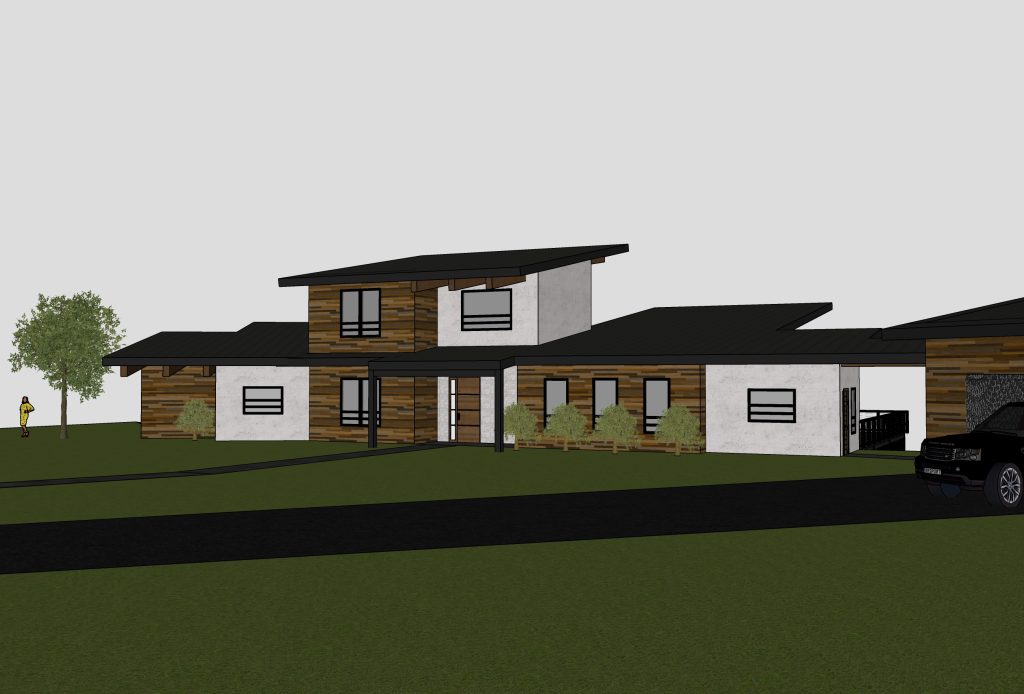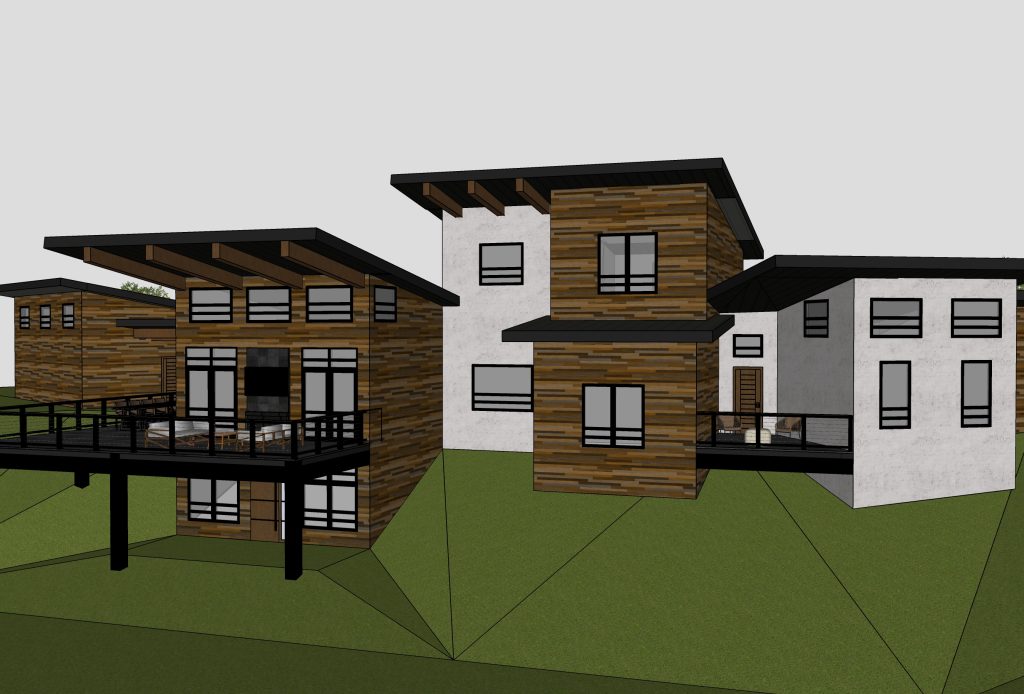
University of Miami life has included a few fun days at Key Biscayne, a lot of late nights in the architecture studio, and a ton of thinking about my future career as a licensed architect. Despite only being a rising third year at the University of Miami’s School of Architecture, I have found myself frequently wondering what it is like to be a real architect. Throughout my two years of school, I have learned software after software, great design skills, and how to make a snazzy layout for a final pinup, but I had not exactly grasped what day-to-day life is like for a licensed architect working in a firm. I wanted more information and experience so I started looking for opportunities.
A job shadowing position at Gaines Group Architects was the perfect answer to my question. I met with my mentor, Charles Hendricks, for two and a half months over the summer. I currently live in Miami, so going to the Virginia-based firm in person was not an option. Charles and I worked out an option to do a virtual job shadowing position where I could get a glimpse of his current projects and design a new project of my own. I met with Charles on Zoom (link to zoom website) once a week and was able to receive invaluable feedback on my design while gaining insight into his responsibilities as the principal architect at Gaines Group Architects.
I have been interested in architecture since I was young. Whether I was designing houses on Minecraft and The Sims or printing out blueprints and drawing over them, I was always finding ways to create and design. The first time I met Charles was over two years ago when I was deciding whether or not to major in architecture in college. Charles told me getting an architecture degree would not be easy and is accompanied by a lot of late nights, but it is worth it if architecture is what I truly enjoy. After that conversation I knew architecture was the major for me, even knowing it is challenging.
Now, speaking as someone with two years of a degree under her belt, architecture school is the hardest thing I have ever done. I have Studio, my main class, for three hours every other day. Honestly, studio controls my life. Once the class is finished, I stay in the studio and continue to work all day, otherwise, there is no way I will get to bed before 4 a.m. Weekends are reserved for projects, not partying. Getting an architecture degree takes discipline, but I am able to make it through because I love the work I am doing. If I could give one piece of advice to someone considering going to architecture school, it would be to only go into this degree if it really captivates your interest and is something you could work on consistently for hours every single day. Yes, architecture school is hard, but it is the only way to become an architect, so it is worth it to me.
When Charles offered me a virtual job shadowing position for the summer, I was very eager to take advantage of the opportunity to learn more about architecture post-college. College architecture is all that I know, and although the degree is designed to prepare me for life after graduation, I still was not sure what it was like to be an architect working in a firm. A lot of the designs we do in college are not geared toward real-life clients, so it was hard to imagine designing catered to others’ wants and needs versus my own. For the job shadowing position, I decided to design my parents’ future home that they will be constructing in around five years. This project was the perfect way to experience designing something with real clients, but the clients are my parents, so it is okay if I mess up. I also took on the task of learning and using software I had never used before. Charles informed me that at his firm they use #SketchUp for 3D modeling. At the University of Miami, we use either Rhinoceros 3D or #Revit for digital model making, but I had heard before that Sketchup is a more commonly used software in firms, so I figured this summer would be a great time to learn, especially with Charles assisting me along the way.
Charles suggested the first step in this project be a #Zoom meeting with both of my parents, where I interview them as the “principal architect” and ask questions regarding their vision for their future dream home. Charles was very helpful in this process; he gave me a list of topics to discuss with my clients that allowed me to understand what sort of questions I will be asking my clients in the future.
My parents wanted a Pacific Northwest-style home with three bedrooms, three and a half bathrooms, an open floor plan, large living spaces, and kitchen, and most importantly, a giant covered porch. The house is going to be built on my parents’ land, so my next step would be to visit the site in person to get a feel for the topography and areas with the best views. Since I am in Miami, I could not visit the site myself. Thankfully, Charles was able to meet with my parents and visit the site, so then he could explain to me where and how the house should be positioned to warrant the best possible views of the property. The site is sloped, so I had to overcome the challenge of designing a home on a hill, which is obviously not a design issue I experience in Miami. Additionally, because I was unable to see the site in person, it was difficult at times to understand important design-affecting elements, such as how steep the incline of the land is and the location of the existing driveway in relation to the site. Charles helped me through these challenges and gave me great insight as to how to design a home with a sensible layout that is also in-budget, structurally sound, and up-to-par with my parent’s stylistic requirements.
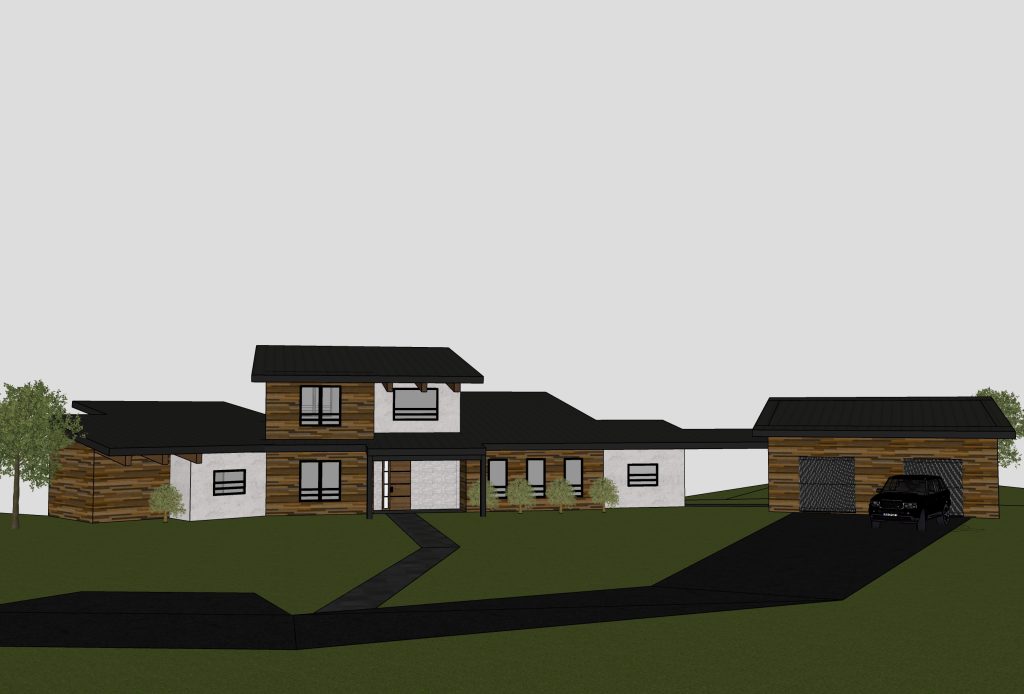
I started my design process with sketches and drafts of floor plans and elevations. Through the drafting stage, I learned a lot about how to stay on budget and how particular elements like having a lot of angles, too spread out of a floorplan, or a complex roof can quickly make the cost of the building increase. I learned to simplify and condense design elements to fit my parents’ budget, which is something I have not had to do in college architecture due to the fact that we are not designing for a real client with a real budget.
After I had a more solidified floor plan, I used AutoCAD to further its development. I found it very beneficial to have “clients” to reference when I had a particular design question. In architecture school, the student makes all the design decisions and caters the project to his or her own desires, but for this project, I got a taste of what it is like to design for somebody else rather than myself. I was able to ask my clients what they exactly wanted, so essentially the clients were making all the tough decisions for me.
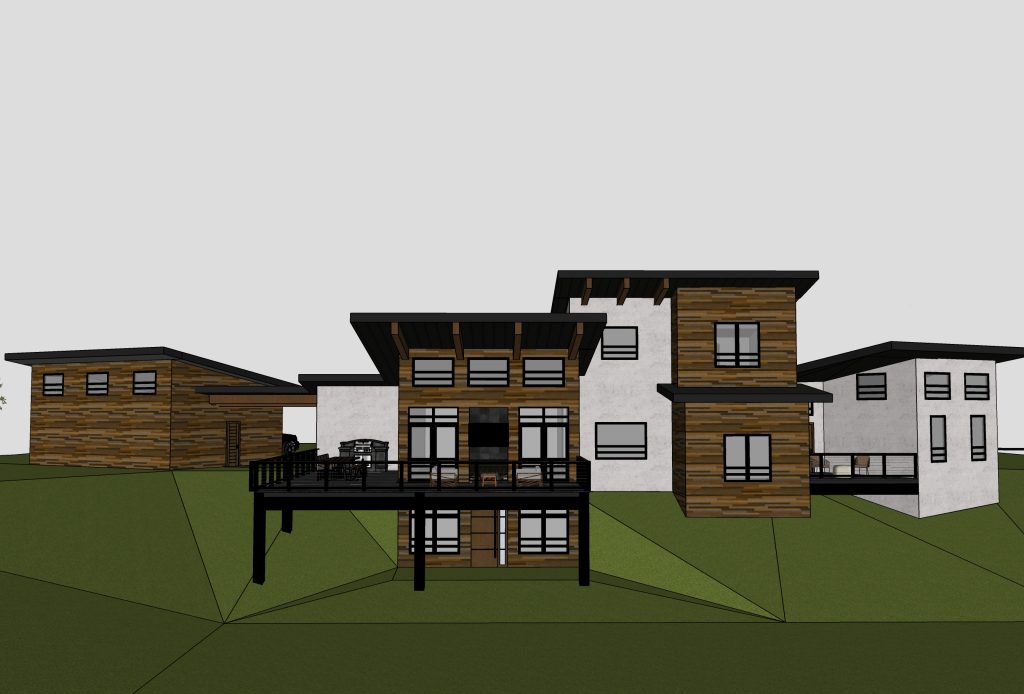
Next, I brought my floor plans into SketchUp and began 3D modeling. SketchUp was far more user-friendly than any other 3D modeling software I have used, so I had a great time playing around with the form of the house and making changes to the floor plan accordingly. I found it to be much easier to quickly go from an incomplete model to a finished model with materials and landscaping in SketchUp than it is in any other 3D modeling software, so I am very grateful Charles suggested I learn the program. Additionally, I now have another skill to add to my resume and another unique design piece to add to my portfolio.
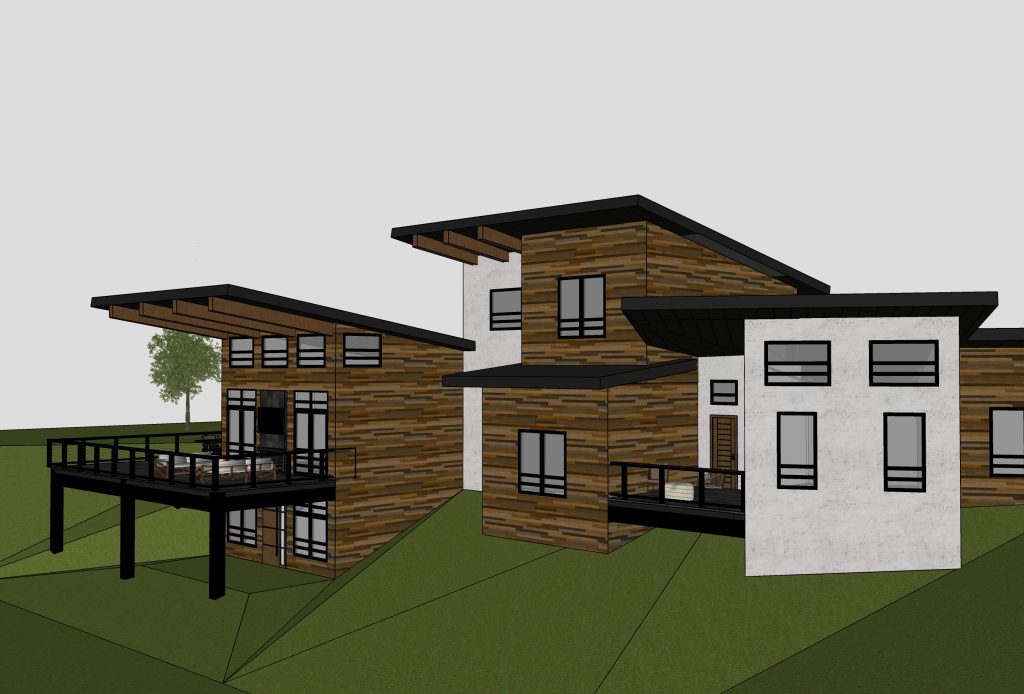
As part of this job shadowing experience, I also got an inside look at what Charles is working on and the sorts of projects he receives at his firm. It was very interesting to see the grand scope of projects he is juggling all at once, from a giant book warehouse to a bagel store to a gorgeous home. I realized that architecture can be whatever I want to make it in the future, and I can specialize in literally any field of architecture I desire. I also realized that it gets better. Architecture is not an easy profession by any means, but at least it seems that the all-nighters will stop after college.
Getting an architectural degree can feel defeating at times, but this job shadowing experience gave me hope for my future as a licensed architect. I would recommend anyone considering majoring in architecture, or even already working on their architecture degree, to job shadow an architect. I gained so much from my job shadowing experience: I learned new software, received amazing feedback on my own work, gained insight into the work and daily life of a busy architect, and designed a dream home for my parents. Thanks to Charles and Gaines Group Architects, I can now picture my future as a working architect and I am looking forward to it more than ever.
